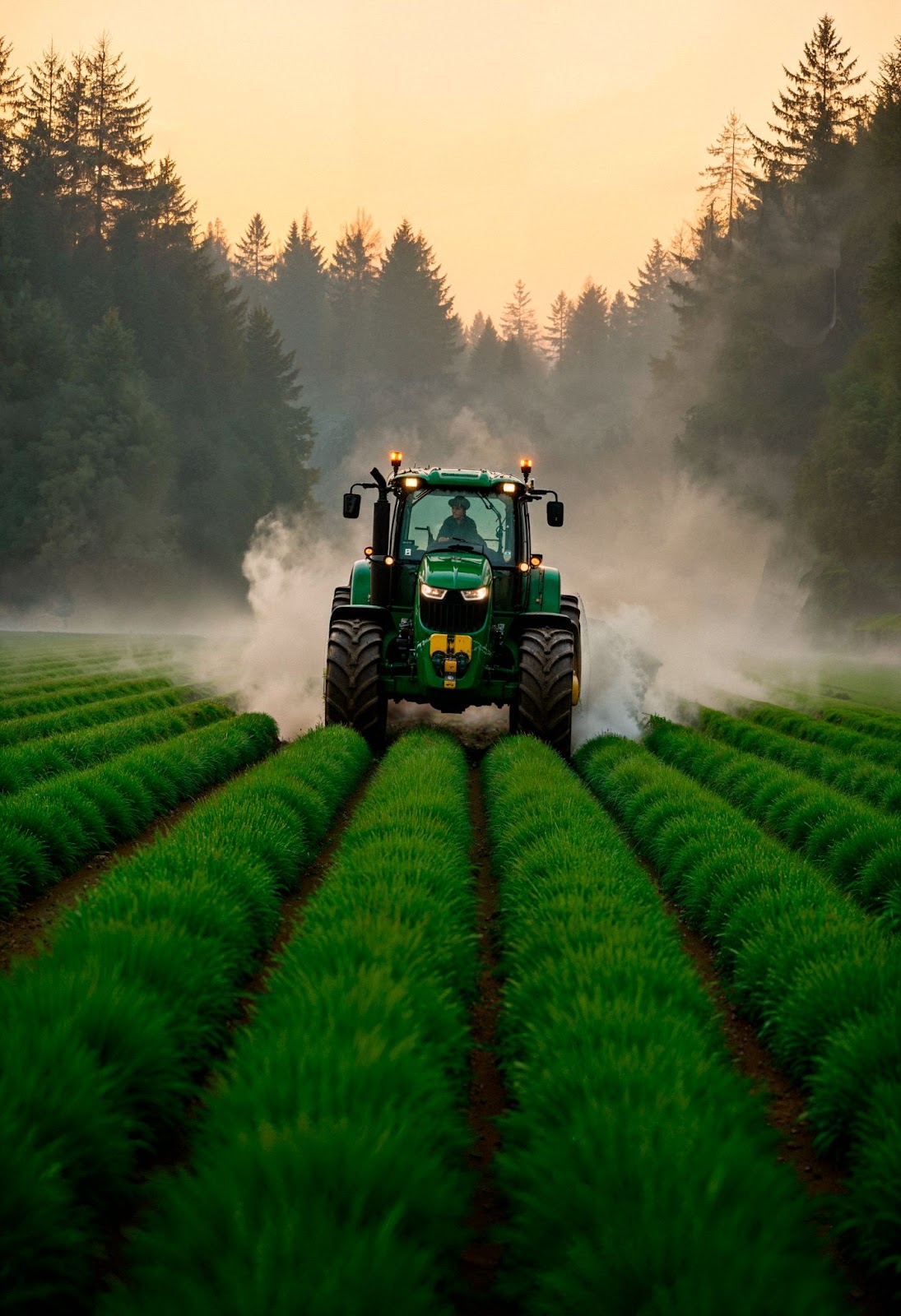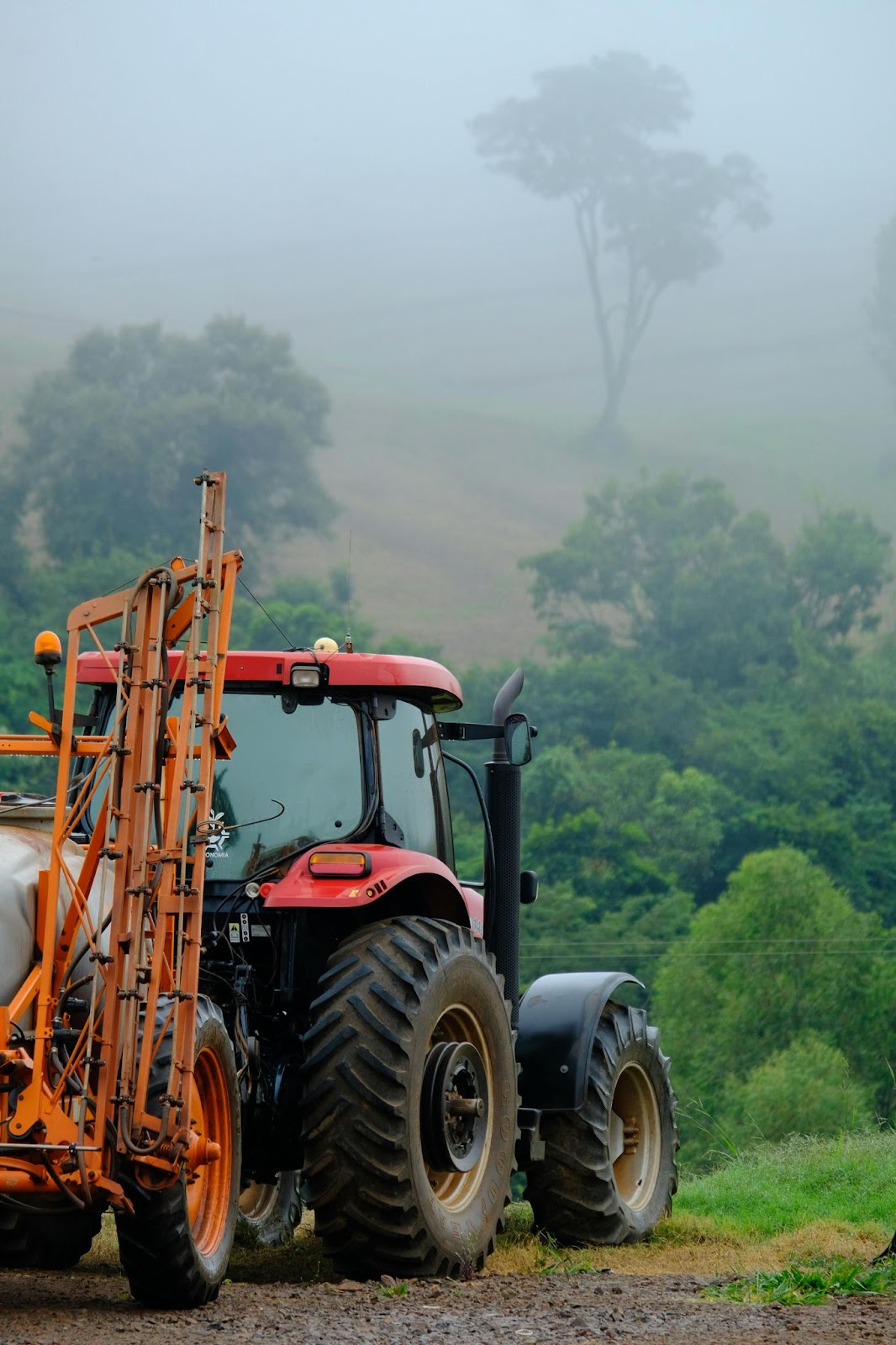.jpg)
If you’ve ever driven past a farm in the spring and spotted a tractor moving through a field with a cloud of mist trailing behind it, chances are you’ve already seen an AG sprayer in action without even realizing it.
So, what is a sprayer, exactly? This beginner’s guide to spraying equipment is here to help if you’ve been wondering how farmers take care of their crops and manage their fields effectively. No need to worry about a bunch of technical jargon, we’re keeping things simple and easy to understand, like a warm cup of coffee on a cool harvest morning.
An AG sprayer, short for agricultural sprayer, is a machine used to apply things like herbicides, pesticides, fungicides, and fertilizers across crops or pasture land. Picture a big metal spider strapped to the back of a tractor or mounted on a trailer, outfitted with nozzles, tanks, pumps, and booms (long arms that stretch wide to cover more ground).
But here’s the kicker: it’s not just about spreading chemicals. It’s about precision, coverage, timing, and ultimately, saving time and money while boosting yields. Think of it as the difference between watering your lawn with a teacup or using a sprinkler system, it’s about scale and efficiency. And yeah, these things get high-tech. GPS-guided steering, auto shut-offs, pressure sensors, it’s farming meets Formula 1.
You could. If you have two tomato plants and a lot of free time.
But once you’re looking at acres of corn, wheat, soybeans, or really, anything that stretches out farther than your legs can walk before lunch, you need serious help. AG sprayers are that help. They’re built to cover wide areas quickly while making sure each plant gets what it needs. No more, no less. Waste is money, and so is delay. Every pass through the field counts.
Plus, modern sprayers help with things like drift control (so your neighbor’s organic cucumbers don’t get sprayed by accident) and environmental safety. It’s not just about crop protection, it’s about responsibility.
Let’s unpack the nuts and bolts, but keep it snappy:
These components work together to give you control and consistency. Without them, you’re back to trial and error, and in ag, error gets expensive.

Here’s a quick guide to the most common types you’ll run into:
Imagine a pressure washer crossed with a fire truck, but dialed way down. The tank holds a mixture of water and the chosen chemical, which the pump sends toward the boom. Each nozzle then sprays a precisely calculated amount across the plants.
The goal is to evenly coat the plant’s surfaces, not to drench or drown them. Too much chemical burns the crops. Too little? You may as well spit on them.
Here’s where it gets interesting: smart sprayers can detect plant height, adjust nozzle output, and even skip over already-treated rows. It's precision agriculture at its finest.
AG sprayers aren’t plug-and-play. They require calibration, maintenance, and attention to weather.
It’s not just about owning the equipment. It’s about knowing how to use it.
If you’re a hobbyist with a garden, a hand sprayer will do just fine. But if you’re running a small farm, managing a co-op, or part of a larger ag operation, AG sprayers are a must-have tool. Whether you're spraying pre-emergent herbicides in early spring, applying foliar feed mid-season, or managing pests in August, having a sprayer you can trust makes a real difference.
And let’s not forget land maintenance pros, golf course managers, and even municipalities, these machines aren’t just for farmers. For different purposes, lawn and garden sprayers are it. They’ve got crossover value.

We’ve seen old-timers mod their sprayers with tool racks, cup holders, even Bluetooth speakers. Why not? When you're doing long rows in the sun, a little music helps. Others invest in better seats, LED lights for pre-dawn jobs, or upgraded nozzles for improved precision.
Because when you rely on something that much, you make it yours.
You might be surprised just how cutting-edge these rigs are becoming. Drone sprayers are rising fast, literally, offering access to tight spots and delicate terrain without running over crops. Meanwhile, AI-powered spray systems are using camera vision to identify weeds and zap them on the spot, reducing chemical use by up to 90%.
It’s no longer just about blanketing the field. It’s about treating the field like a living map, every square foot, every plant, every droplet with purpose.
By now, you’ve got a solid grasp on the essentials and the importance of spraying equipment. So, if someone corners you at a family BBQ and asks, “What is an AG sprayer?” you can answer confidently, probably with more detail than they bargained for.
They’re tools of precision, protection, and power. Not flashy, but essential. And like most things in ag—they work best when you know what you’re doing.
Look, understanding what a sprayer is is one thing; getting the right equipment and service to back it up is another. That’s where Iva Mfg comes in. From design to durability, they know their way around spraying systems like a farmer knows their soil.
If you're looking to upgrade your gear or build something custom that fits your needs like a glove, get in touch. Because when your yield’s on the line, you want to roll with folks who’ve got dirt under their nails and pride in their welds.